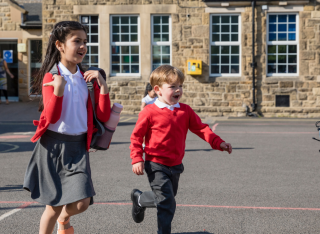
Arvind Tiwari
About
Biography
Arvind Tiwari is a research fellow as well as a postgraduate researcher (Ph.D. Student) that holds a postgraduate degree in environmental and management from the Indian Institute of Technology Delhi (IIT-D) and an undergraduate degree in civil engineering from Madhav institute of technology & Science Gwalior, India.
He is a research staff in the ESPRC funded project CO-TRACE (COvid-19 Transmission Risk Assessment Case studies- education Establishments; https://co-trace.uk/about) at the Global Centre for Clean Air Research (GCARE), in the Department of Civil and Environmental Engineering at the University of Surrey. He has more than ten years of work experience in modelling, monitoring and simulation of environmental flow problems such as urban-scale air pollution and green infrastructure modelling, indoor and outdoor air quality monitoring, data analysis of low-cost air pollution sensors network, and citizen science activities.
Arvind has completed Graduate Certificate in Teaching and Learning (GCLT) and currently is a PhD student at the GCARE in the Department of Civil and Environmental Engineering at the University of Surrey. During his stay in Guildford, he will be under the guidance of Professor Prashant Kumar (Principal Supervisor) and Dr. Devendra Saroj (Co-Supervisor) on the topic: Modelling Framework for Assessing Green Infrastructure Interventions to Simulate Air Pollutant Concentration and Urban Heat Island Effect at Urban Scale.
Arvind has won Santander Universities Researcher Mobility Awards 2018 and FEPS “PGR Student of the Year Award” 2020.
My qualifications
ResearchResearch interests
- Air pollution modelling
- Urban green infrastructure planning
- Indoor air quality monitoring
- Outdoor air quality monitoring
- Particle dispersion modelling
- Respiratory infection risk modelling in indoor environments
- Low-cost sensor networks
- Big data analysis
Research projects
The CO-TRACE project brings together researchers working at the Universities of Cambridge, Surrey, and Imperial College London, to assess the risk of airborne COVID-19 transmission in schools and evaluate the effectiveness of mitigation measures.
- This will be done by developing techniques to assess the absolute risk of infection in a given indoor space, using field studies in primary and secondary schools, complemented by laboratory experiments and computational fluid dynamics to elucidate the flow patterns responsible for airborne transport.
- The understanding generated will underpin recent developments in infection modelling to predict the likelihood of airborne transmission within schools.
- The project will reduce the uncertainties associated with airborne transmission routes and provide evidence to evaluate mitigation measures. The scenarios we will investigate include changes to ventilation, classroom layout, and occupancy profiles. The methodology will facilitate application to offices, restaurants, shops, etc.
The RealAir project is a citizen science activity, in which Guildford Living Lab (GLL) will collaborate with Zero Carbon Guildford (ZCG) to design, set up, and operate a real-time air quality monitoring system based on low-cost sensing technology. This system will monitor local PM at different size fractions along with temperature and relative humidity. The GCARE team played an active role in the launch of the ZCG in the month of November 2021.
iSCAPE was a European research and innovation project active from September 2016 to December 2019. The project worked on integrating and advancing the control of air quality and carbon emissions in European cities in the context of climate change through the development of sustainable and passive air pollution remediation strategies, policy interventions, and behavioural change initiatives.
Research interests
- Air pollution modelling
- Urban green infrastructure planning
- Indoor air quality monitoring
- Outdoor air quality monitoring
- Particle dispersion modelling
- Respiratory infection risk modelling in indoor environments
- Low-cost sensor networks
- Big data analysis
Research projects
The CO-TRACE project brings together researchers working at the Universities of Cambridge, Surrey, and Imperial College London, to assess the risk of airborne COVID-19 transmission in schools and evaluate the effectiveness of mitigation measures.
- This will be done by developing techniques to assess the absolute risk of infection in a given indoor space, using field studies in primary and secondary schools, complemented by laboratory experiments and computational fluid dynamics to elucidate the flow patterns responsible for airborne transport.
- The understanding generated will underpin recent developments in infection modelling to predict the likelihood of airborne transmission within schools.
- The project will reduce the uncertainties associated with airborne transmission routes and provide evidence to evaluate mitigation measures. The scenarios we will investigate include changes to ventilation, classroom layout, and occupancy profiles. The methodology will facilitate application to offices, restaurants, shops, etc.
The RealAir project is a citizen science activity, in which Guildford Living Lab (GLL) will collaborate with Zero Carbon Guildford (ZCG) to design, set up, and operate a real-time air quality monitoring system based on low-cost sensing technology. This system will monitor local PM at different size fractions along with temperature and relative humidity. The GCARE team played an active role in the launch of the ZCG in the month of November 2021.
iSCAPE was a European research and innovation project active from September 2016 to December 2019. The project worked on integrating and advancing the control of air quality and carbon emissions in European cities in the context of climate change through the development of sustainable and passive air pollution remediation strategies, policy interventions, and behavioural change initiatives.
Publications
Poor environmental quality in school classrooms can have a detrimental impact on children’s health, nevertheless, the association between air pollutants and physical features of classrooms is poorly understood. We monitored particulate matter (PM), carbon dioxide (CO2) and thermal comfort in sixty classrooms across ten London primary schools using similar equipment to produce a comparable dataset. The overall research objective was to understand the association of classroom air quality with occupancy levels, floor types, classroom locations, classroom volume, ventilation types and different year groups. Average in-classroom PM10 (29±20), PM2.5 (10±2) and PM1 (5±2 μg m-3) during occupied hours were ∼150% (PM10) and 110% (PM2.5) higher compared to non-occupied hours. PM10 concentration was reduced by 30% for dual (mechanical+natural) compared to natural ventilation only; the corresponding reduction was slightly lower for PM2.5 (28%) and PM1 (20%). PM10 almost doubled for wooden floored classrooms compared with those having carpets. During high occupancy (>26 occupants), the average CO2 (935±453 ppm) was ∼140% higher than non-occupancy. The average CO2 in classrooms occupied by younger children (reception and year one) was ∼190% higher than those with older children (years eight and nine). 68% of classrooms exceeded the recommended levels of 40% relative humidity. Low PM10 concentrations coincided with low CO2 concentrations in classrooms across all schools. These findings highlight the importance of simultaneously addressing both thermal comfort and the resuspension of PM10 to achieve comprehensive improvements in classroom air quality. Classroom settings where indoor environment is likely to be compromised can also be identified and addressed.
The health and academic performance of children are significantly impacted by air quality in classrooms. However, there is a lack of understanding of the relationship between classroom air pollutants and contextual factors such as physical characteristics of the classroom, ventilation and occupancy. We monitored concentrations of particulate matter (PM), CO2 and thermal comfort (relative humidity and temperature) across five schools in London. Results were compared between occupied and unoccupied hours to assess the impact of occupants and their activities, different floor coverings and the locations of the classrooms. In-classroom CO2 concentrations varied between 500 and 1500 ppm during occupancy; average CO2 (955 ± 365 ppm) during occupancy was ∼150% higher than non-occupancy. Average PM10 (23 ± 15 μgm-3), PM2.5 (10 ± 4 μgm-3) and PM1 (6 ± 3 μg m-3) during the occupancy were 230, 125 and 120% higher than non-occupancy. Average RH (29 ± 6%) was below the 40–60% comfort range in all classrooms. Average temperature (24 ± 2 °C) was >23 °C in 60% of classrooms. Reduction in PM10 concentration (50%) by dual ventilation (mechanical + natural) was higher than for PM2.5 (40%) and PM1 (33%) compared with natural ventilation (door + window). PM10 was higher in classrooms with wooden (33 ± 19 μg m-3) and vinyl (25 ± 20 μgm-3) floors compared with carpet (17 ± 12 μgm-3). Air change rate (ACH) and CO2 did not vary appreciably between the different floor levels and types. PM2.5/PM10 was influenced by different occupancy periods; highest value (∼0.87) was during non-occupancy compared with occupancy (∼0.56). Classrooms located on the ground floor had PM2.5/PM10 > 0.5, indicating an outdoor PM2.5 ingress compared with those located on the first and third floors (300 m3) classroom showed ∼33% lower ACH compared with small-volume (100–200 m3). These findings provide guidance for taking appropriate measures to improve classroom air quality.
Providing children with a clear understanding of climate change drivers and their mitigation is crucial for their roles as future earth stewards. To achieve this, it will be necessary to reverse the declining interest in STEM (Science, Technology, Engineering and Mathematics) education in schools in the UK and other countries, as STEM skills will be critical when designing effective mitigation solutions for climate change. The ‘Heat-Cool Initiative’ was co-designed and successfully implemented in five primary/secondary UK schools, as a playful learning tool to unleash student interest in STEM subjects. 103 students from two cohorts (years 5-6 and 7-9) participated in five Heat-Cool activity sessions where they used infrared cameras to explore the issue of urban heat. Their learning was evaluated using a multi-functional quantitative assessment, including pre- and post-session quizzes. Climate change literacy increased by 9.4% in primary school children and by 4.5% in secondary school children. Analyses of >2000 infrared images taken by students, categorised into 13 common themes, revealed age-related differences in children’s cognitive development. At primary school age, images of the ‘self dominated; secondary school children engaged more with their physical environment. This novel approach demonstrated the importance of developing tailored technology-enhanced STEM education programmes for different age cohorts, leading to a high capacity for improving learning outcomes regarding climate change. Such programmes, embedded in school curricula nationally and internationally, could become a much-needed positiv contribution to reaching the United Nation’s Sustainable Development Goals, especially Goals 4 (Quality Education) and 13 (Climate Action).
